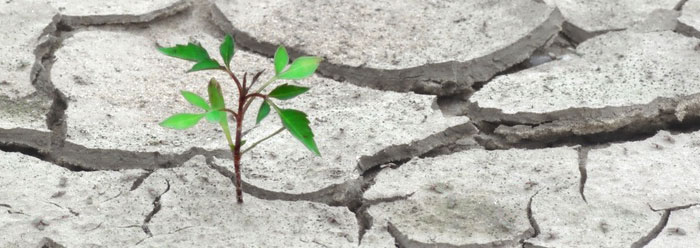How fast can a disaster zone bounce back? Apparently, faster than previously thought. Yale University ecologists conducted a meta-analysis of 240 studies of devastated ecosystems. They found that ecosystems damaged by pollution can be restored in as few as 10 years. Why then was it believed they would take so much longer to recover?
The study, published in PLoS ONE, “rebuts speculation that it will take centuries or millennia for degraded ecosystems to recover and justifies an increased effort to restore degraded areas for the benefit of future generations,” according to a Yale University press release.1 The researchers found that forest ecosystems recover in 42 years, and marine environments in 10 years, with some ecosystems able to recover from maladies like oil spills in as few as five years.
Such short recovery times contrast gloomy sentiments portrayed in popular literature, such as: “Our rare forest type can never recover from this kind of treatment [clearcutting].”2 References to “fragile ecosystems” abound. Rick Webb of the University of Virginia stated, in reference to the effects of pollution-caused acid rain on Virginia’s trout streams, “It can be fixed but not in our lifetime.”3
Evidently, painting a bleak picture of the potential for living systems to recover has been an essential tactic for effective fundraising among conservation organizations, which have solicited millions of dollars in recent decades. William Meadows, president of The Wilderness Society, admitted that “we are a culprit here—constantly preaching gloom and doom.” The same report quoted Daniel Beard, then CEO of the Audobon Society, as saying, "What works with direct mail? The answer is crisis. Threats and crisis."4
The results of the Yale study may not be consistent with some special interest agendas, but the observation that many damaged environments can recover efficiently is consistent with the creation message. Although some ecosystems are undoubtedly more fragile than others, the world harbors many robust organisms, with built-in bounce-back abilities. These come from the providence of the Creator, who outfitted many flora and fauna with toolkits enabling them to rapidly re-establish their populations. It was these same well-engineered abilities that allowed so many creatures to repopulate the entire earth after the catastrophic worldwide Flood just over 4,000 years ago.5
Nature’s remarkable resilience was also amply demonstrated by the rapid and roughly 20-year rebound of 200 square miles of Washington wasteland resulting from the May 18, 1980, eruption of Mount St Helens.6 Natural ecosystems can rebound from devastating circumstances because of the quality of their construction—a quality that is rightly attributed to the intellect and power of their Creator.
References
- Most Polluted Ecosystems Can Recover, New Study Finds. Yale University press release, May 27, 2009, reporting on research published in Jones, H. P. and O. J. Schmitz. 2009. Rapid Recovery of Damaged Ecosystems. PLoS ONE. 4 (5): e5653.
- Tropical Dry Forest. Fact sheet from the Turks and Caicos Islands Department of Environment and Coastal Resources. Posted on environment.tc, accessed May 29, 2009.
- Santos, C. Va.’s trout streams in trouble. Richmond Times-Dispatch. Posted on timesdispatch.com July 4, 2008, accessed May 29, 2009.
- Knudson, T. 2001. Environment Inc, Special Series. Sacramento Bee. Posted on icecap.us, April 22, 2001, accessed May 29, 2009.
- It is possible that those creatures with lower capacities to recover from various harmful effects did not survive the changes in climate and habitat resulting from the Flood. Thus, today’s living collection represents the hardiest forms, a much smaller subset of the original creation.
- Swenson, K. and D. Catchpoole. 2000. After devastation…the recovery. Creation ex nihilo. 22 (2): 33-37.
* Mr. Thomas is Science Writer at the Institute for Creation Research.
Article posted on June 11, 2009.
























